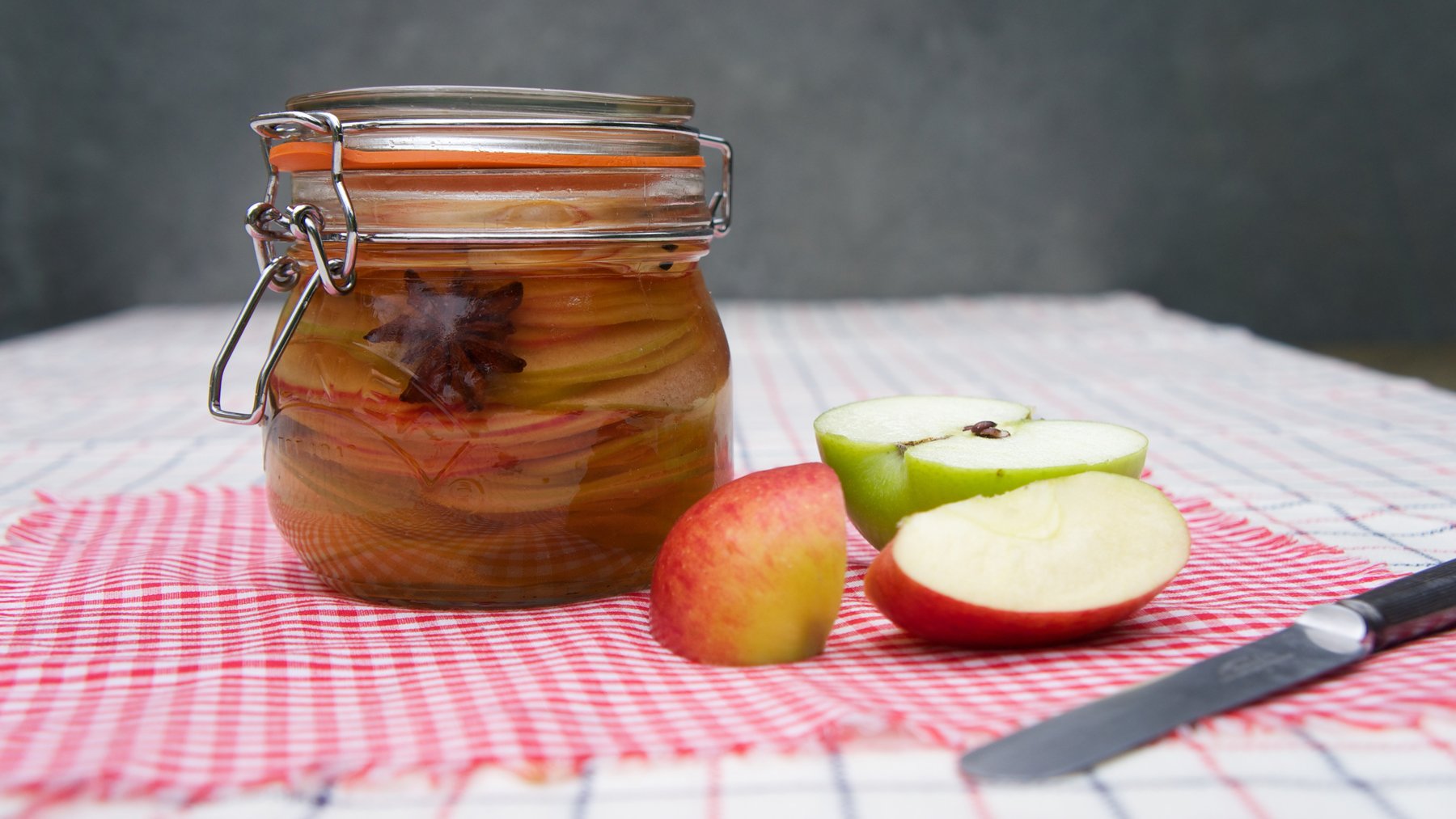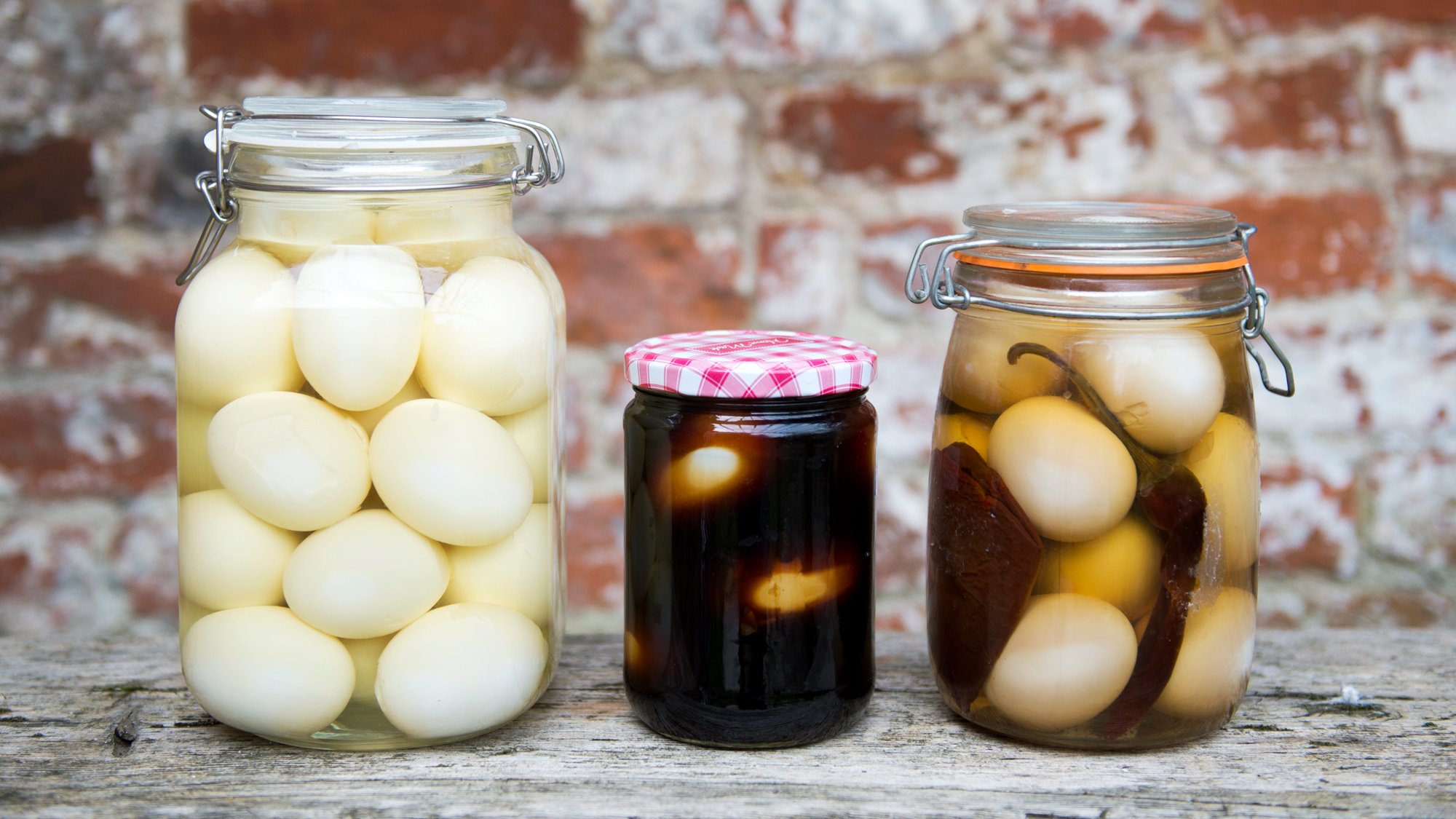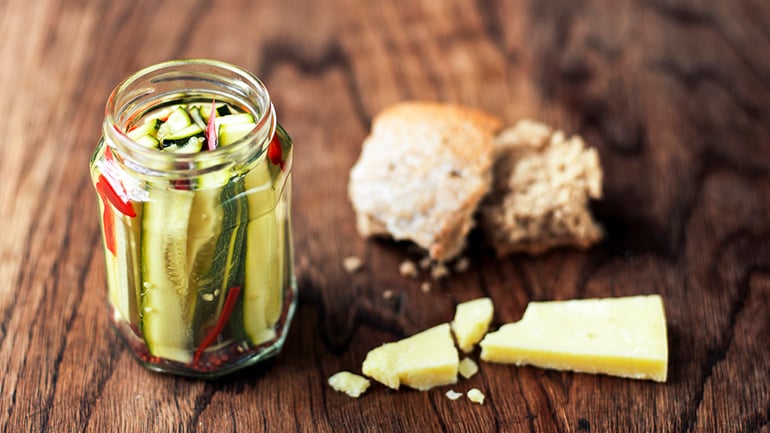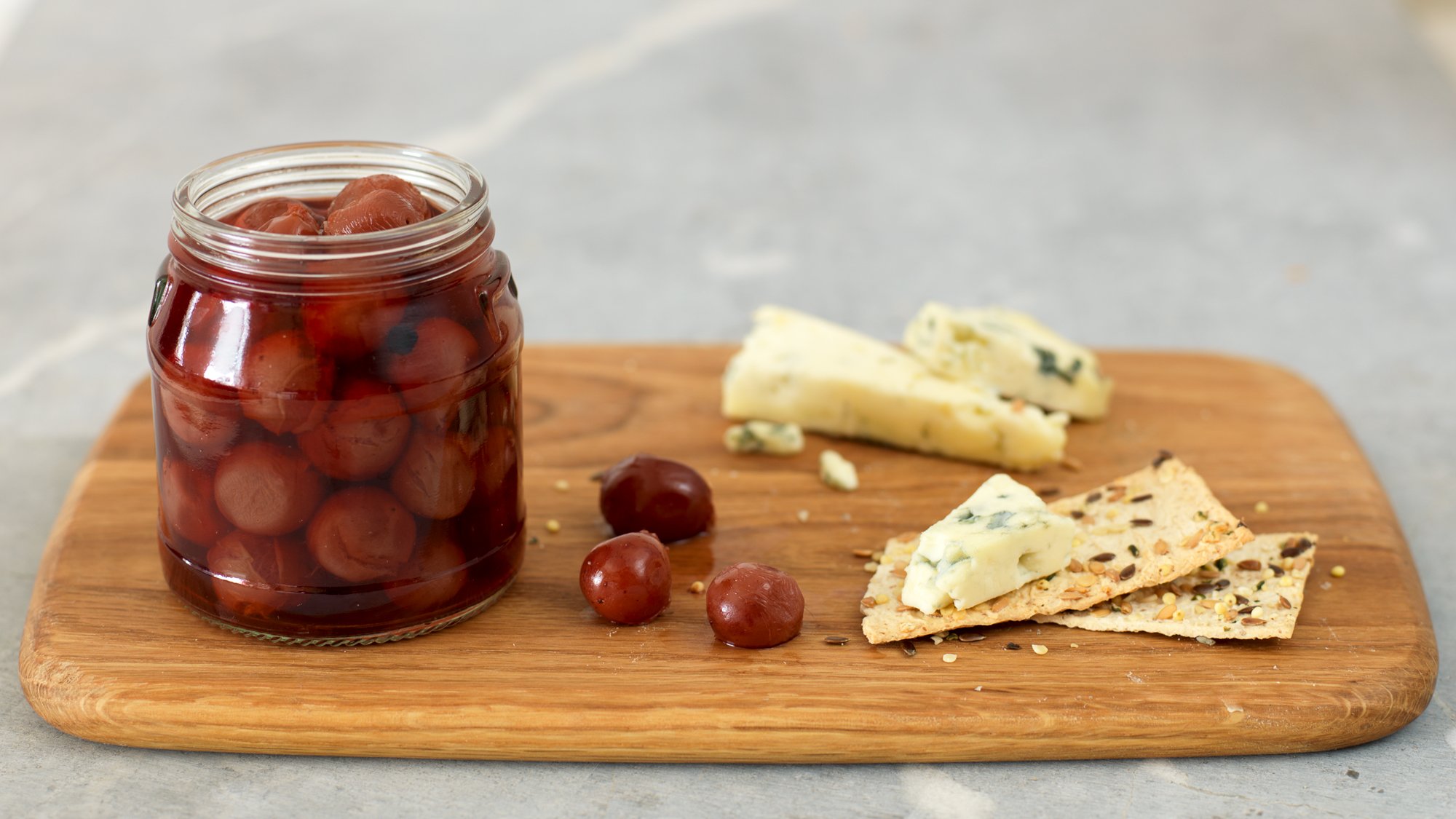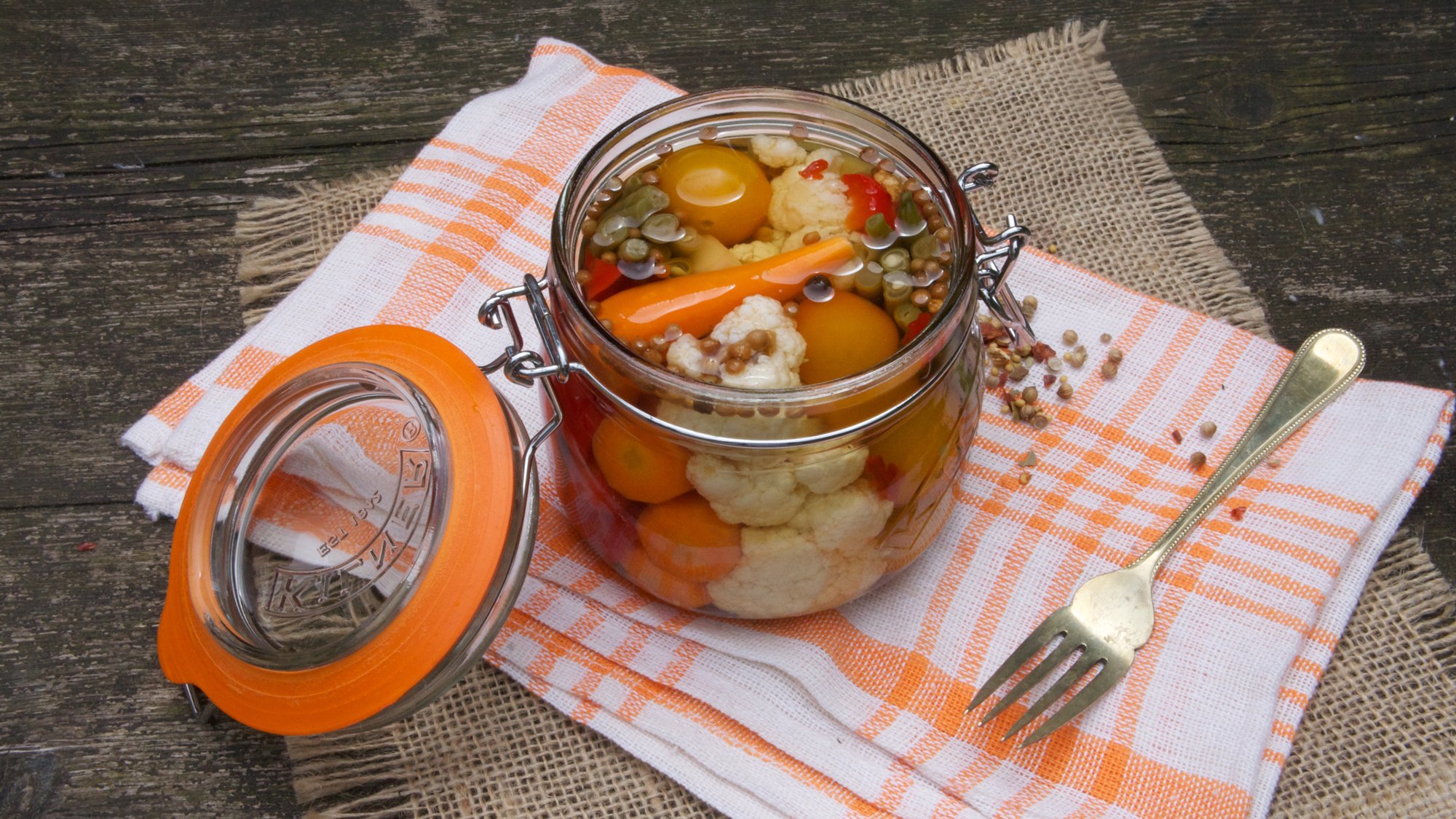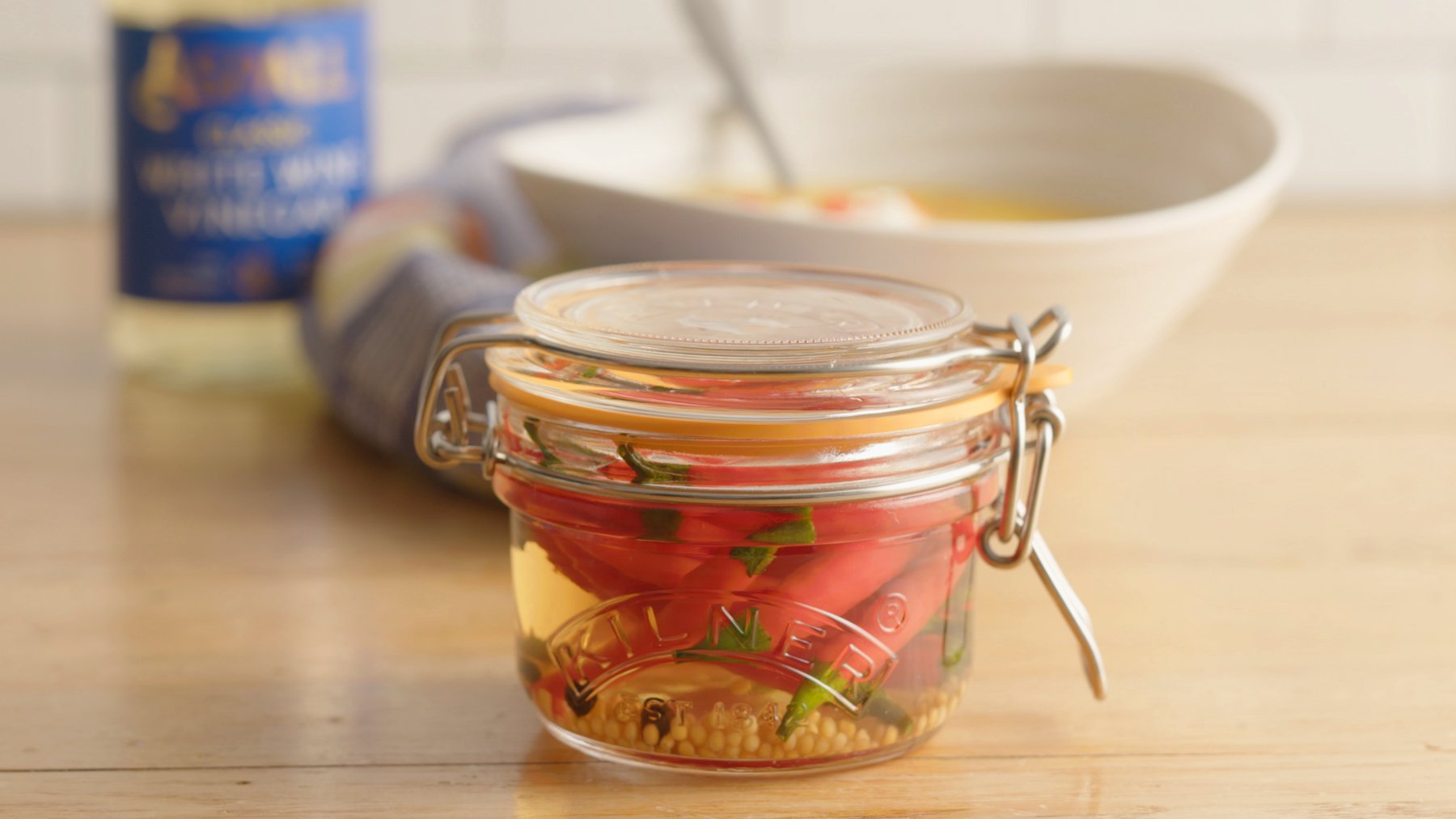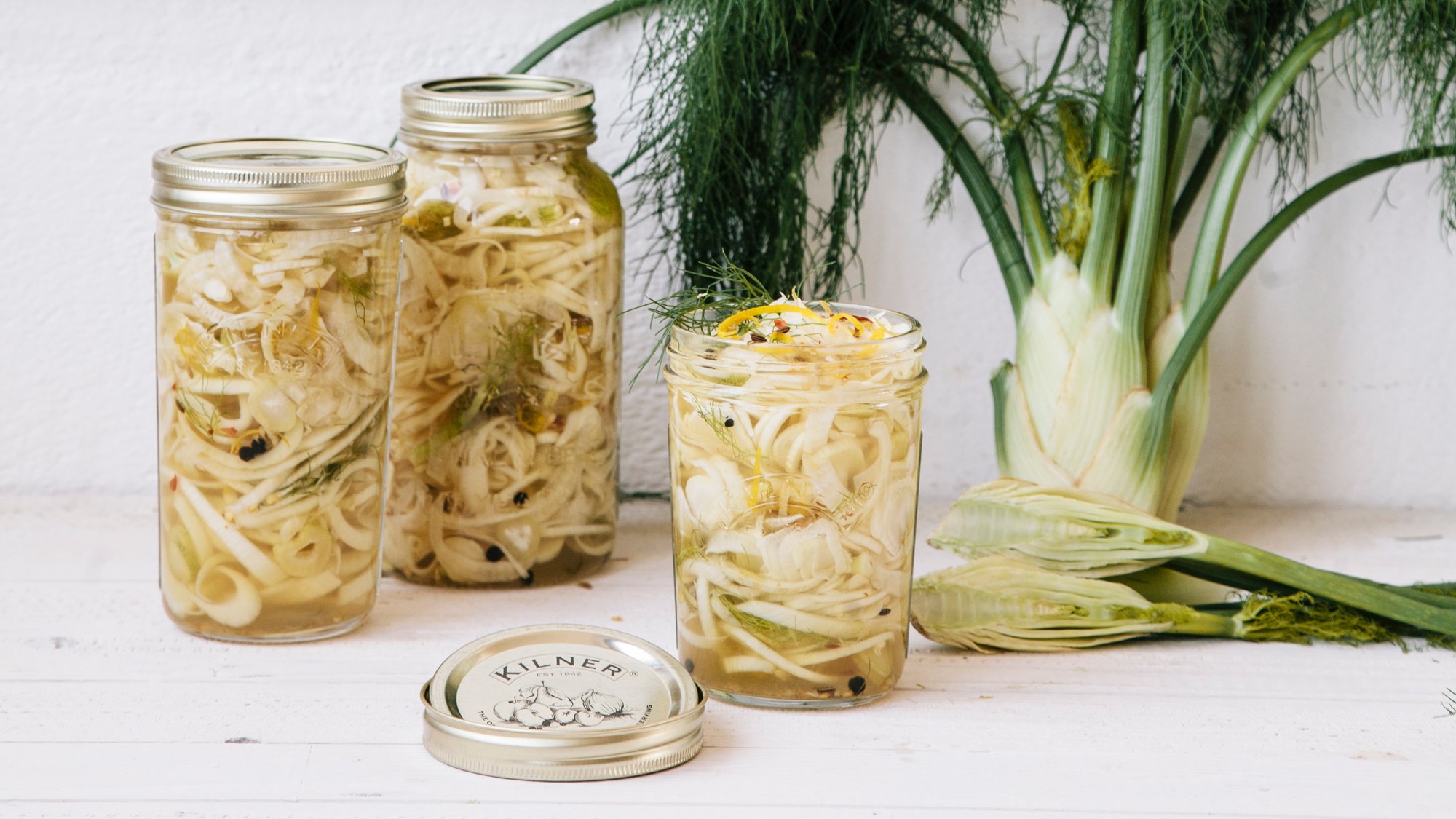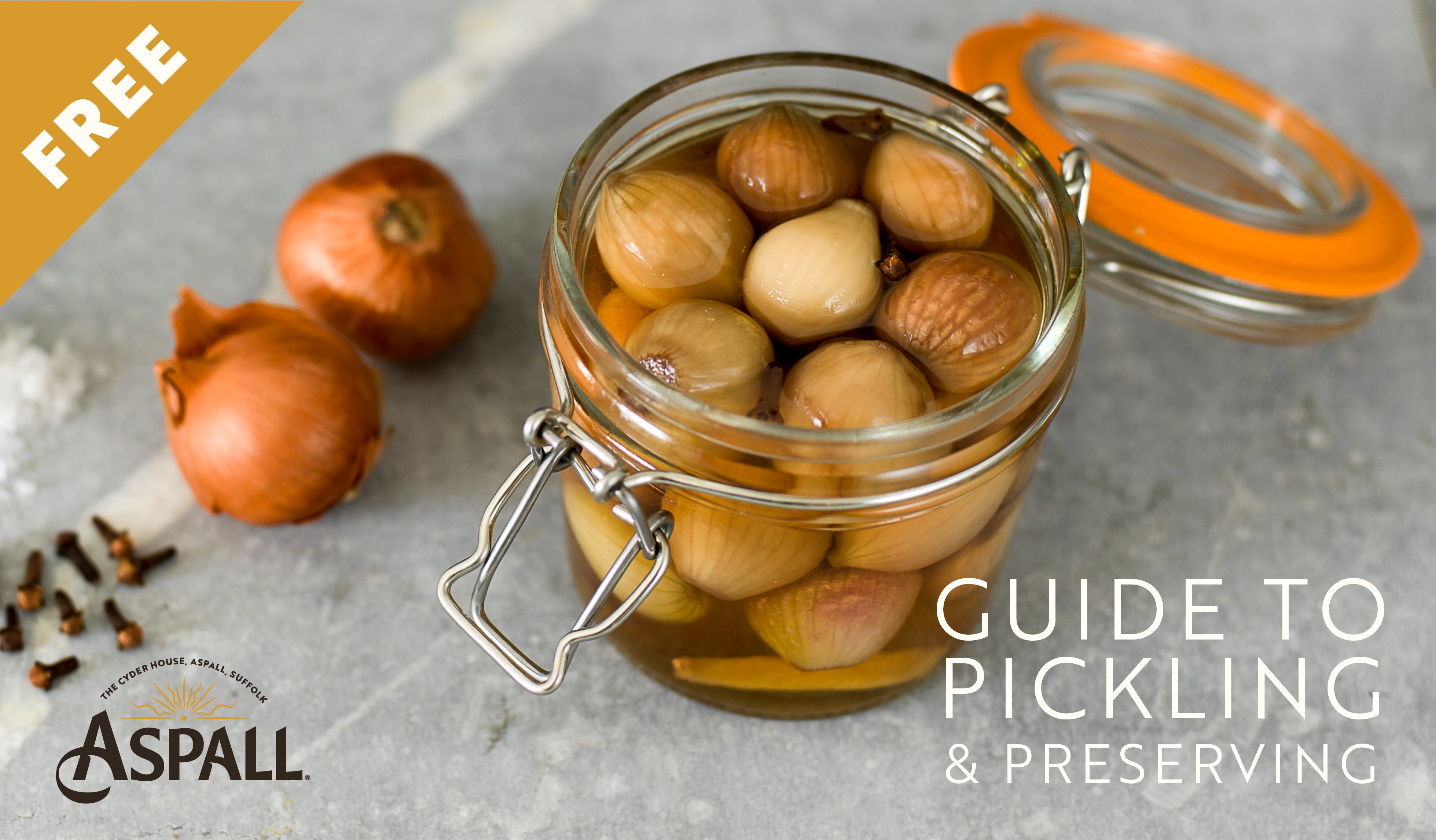Our top Pickling Tips!
Pickling veg and fruit isn’t as fiddly and time-consuming as you might think. It’s a great way to preserve summer and autumn veg for those dull winter months. Great with cold meat and cheese they’ll liven up any lunchtime, but they can also be stirred into stews, curries and soups for a bit of extra oomph.
And of course makes a wonderful Christmas present in a pretty jar with a hand-written label. There’s no fiddling timings to worry about, no pectins and setting points to make you anxious like jam and jelly making. Just follow our top tips for pickling at home.
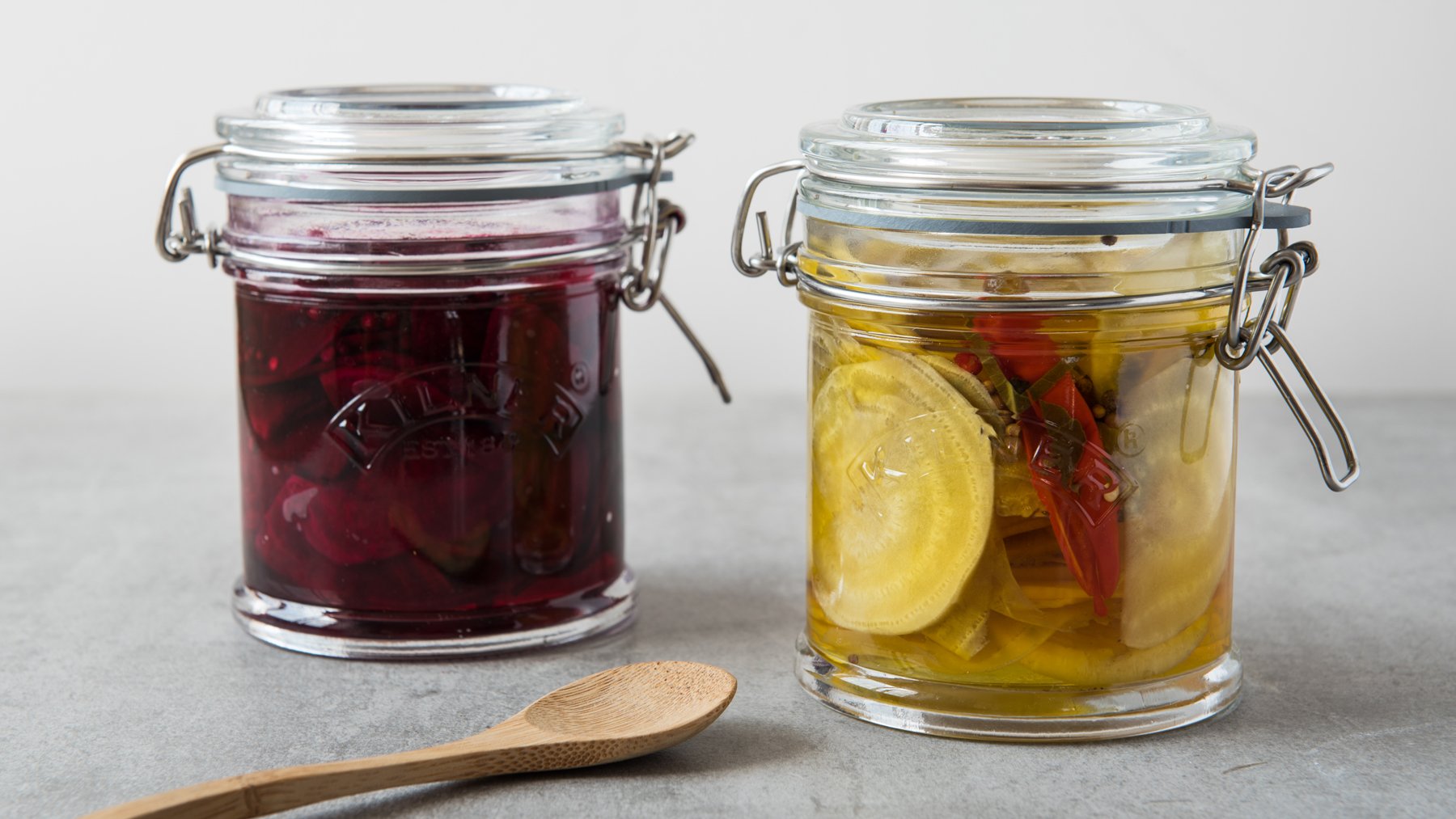
Vinegar
Of course we’re going to begin with the vinegar. Pickles are only as good as the vinegar you use.
Use a good quality vinegar with at least 5% acetic acid (all Aspall vinegars are). There’s no hard and fast rules about which vinegar to use but try and pick the one which you think will best set off the veg or fruit you are preserving and think about the colour you are trying to create. White wine vinegar has a mild flavour but gives a better appearance to light coloured pickles, such as those made from, cauliflower or cucumber. Red wine vinegar is better for pickled beetroot or red cabbage.
Cyder vinegar, with its apple base, is particularly good for sweet pickles. Malt vinegar was the traditional pickling vinegar for many years, it has a strong taste which some people love, though I prefer to save it for my chips! Sherry vinegar and balsamic vinegar can be used half and half with wine or cider vinegar in order to impart their special flavours. Use cold vinegar for crips pickles and hot vinegar for a softer texture.
Salt
Salt plays a crucial role in preservation.
It dries out moisture and inhibits the growth of the microorganisms as well as protecting the flavour. There are two ways to apply salt either to dry salt - i.e. layer the vegetables in a colander and sprinkle with salt as you go along and leave to dry out for up 24 hours. Or to wet-salt or make a brine (50g salt to 600l water) You need a salt that dissolves well in water which is why we love Maldon Sea Salt.
Spices
This is where the fun starts! Spices give flavour, aroma and heat!
There are blends of pickling spice available to buy, we like Bart Ingredients Pickling Spice. But if you’re feeling adventurous experiment with your own spice blend (using whole not ground spices) including things like ginger, cinnamon, allspice, mace and peppercorns). You can bring out their flavour by toasting them briefly in a dry frying pan.
Pam Corbin recommends using 15-30g of spices for 1 litre of vinegar. If you want a clear pickle tie the spices in a muslin bag you can take out before jarring but I like to see a few pretty clovers or star anise floating in the jar.
Vegetable and fruit
The centrepiece of your pickle it’s important to start with good quality ingredients.
Make sure they are young, firm and as fresh as possible. Don’t use anything that’s over ripe and do cut away any brown, bruised or mouldy bits. For the most part you will need to wash, peel and cut the fruit or vegetables into even sizes. Don't worry too much about precise quantities as long as everything fits in your jars (but don’t pack it too tightly to avoid bruising) and can be well covered with the pickling liquid.
Try and put the ingredients in the jar in an attractive way - especially if you are mixing veg like our Mixed Vegetable Pickle. You can make a really pretty arrangement.
The jars
You can’t beat Kilner Jars of all shapes and sizes - they're ultra-reliable and also make your pickles look really attractive whether they’re just for you or for gifts. Kilner have been making glassware since 1842 so you can be sure they know what they’re doing!
Otherwise keep interesting bottles and jars of different sizes, using their manufacturers’ matching lids with regulation rubber inner seals, most modern jars have these - just make sure they are vinegar-proof.
Always sterilise your jars thoroughly before filling - we recommend using Kilner’s recommended water bath method. It's also a good idea to refer to the correct way to fill your chosen jar. This will differ depending on whether you are using jars with twist on lids or clip sided jars. Refer to Pam Corbin's advice about sealing and filling your jars in her recipes here.
Sterilisation
You must always sterilize your jars thoroughly.
One way to do this is to put jars and lids in a hot dishwasher cycle. Alternatively wash them really well in hot soapy water, place them on a baking tray and put them in a low oven at about (110ºC) for at least 20 minutes. Whichever method you use make sure they’re still warm and completely dry before filling.
Be creative
Pickling is fun!
You’ll find lots of recipes in the recipe section of our site from classics like pickled onions or quick pickled beetroot, to more unusual suggestions like pickled grapes or pickled fennel. We’ve also put together a list of 10 of our favourite pickling recipes. But don’t feel you have to adhere to all these recipes. Experiment with the type of vinegar and mixture of spices you use.
Don't be afraid
Pickles are one of the safest food to preserve.
They are protected from mould and bacteria growth by the high acidity levels in vinegar. And unlike jam-making and even baking you don’t need to worry about precise quantities and temperatures. Pickling is fun! Make it your own!
These tips are taken from the experts! If you would like to read what they say for yourself we recommend:
- River Cottage Handbook: Preserves by Pam Corbin (Bloomsbury)
- Salt Sugar Smoke by Diana Henry (Mitchell Beazley)
- The Modern Preserver by Kylee Newton (Square Peg)
Get started
Download our free guide to Pickling & Preserving for more tips and exclusive recipes.

